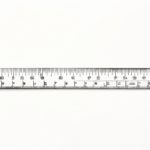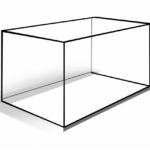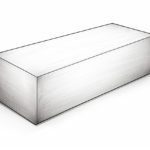Welcome to this step-by-step guide on how to draw a double helix! The double helix is a captivating and intricate shape that represents the structure of DNA. Whether you are a biology enthusiast, a science student, or simply interested in creating visually appealing artwork, this tutorial will help you master the art of drawing a double helix. So grab your materials and let’s get started!
Materials Required
To complete this tutorial, you will need the following materials:
- Pencil
- Eraser
- Paper
- Ruler
- Compass
- Fine-tip black pen or marker
- Colored pencils or markers (optional)
Now that you have gathered your materials, let’s dive into the step-by-step process of drawing a double helix.
Step 1: Draw Two Straight Vertical Lines
Start by drawing two straight vertical lines that are parallel to each other. These lines will serve as the center lines for your double helix. Use a ruler to ensure the lines are straight and aligned. Make sure to leave some space between the lines for the helix to take shape.
Step 2: Sketch the First Curve
At the top of the two parallel lines, draw a smooth curve connecting them. This curve will form the topmost part of the double helix. The curve should start from one line and end at the other, mimicking a gentle wave. Use your pencil lightly for the initial sketch as you may need to make adjustments later on.
Step 3: Mirror the Curve
To create the second curve of the helix, mirror the shape you just drew on the opposite side of the parallel lines. This curve should be similar in size and shape to the first one, but facing in the opposite direction. It should also start and end at the same points on the parallel lines.
Step 4: Repeat the Curves
Continuing from the second curve, draw another curve that mirrors the first one. This will create a repetition of the curves, forming the double helix structure. Repeat this step, alternating the curves on each side of the parallel lines until you reach the bottom. Remember to keep the curves smooth and symmetrical.
Step 5: Refine the Outline
Once you have completed drawing the curves, go over the outline of the double helix with your pencil, refining any uneven lines or areas that need adjustment. Pay attention to the overall shape and symmetry of the helix. You can use a ruler to help straighten any parts that may have become skewed during the initial sketching.
Step 6: Add Details
Now it’s time to add some details to your double helix. Use your ruler and pencil to draw small vertical lines that connect the curves on each side. These lines should overlap the curves, giving the appearance of the helix strands intertwining. Space out the vertical lines evenly along the length of the helix.
Step 7: Outline in Ink
Once you are satisfied with the pencil sketch, go over the final lines with a fine-tip black pen or marker. This will give your double helix a clean and defined look. Be careful not to smudge the ink as you work. You can erase any remaining pencil marks once the ink has dried.
Step 8: Color (Optional)
If you wish to add some color to your double helix drawing, now is the time to do so. Use colored pencils or markers to fill in the helix strands with your desired colors. You can choose realistic DNA colors such as shades of blue and green, or get creative with vibrant and bold hues. The choice is yours!
Conclusion
Congratulations! You have successfully learned how to draw a double helix. This captivating shape is now at your fingertips, ready to be incorporated into your artwork. Remember to practice, experiment with different styles, and have fun with your drawings. The double helix is not only a symbol of DNA but also a symbol of the beauty and intricacy of the natural world. So keep honing your artistic skills, and who knows what other wonders you may create!









